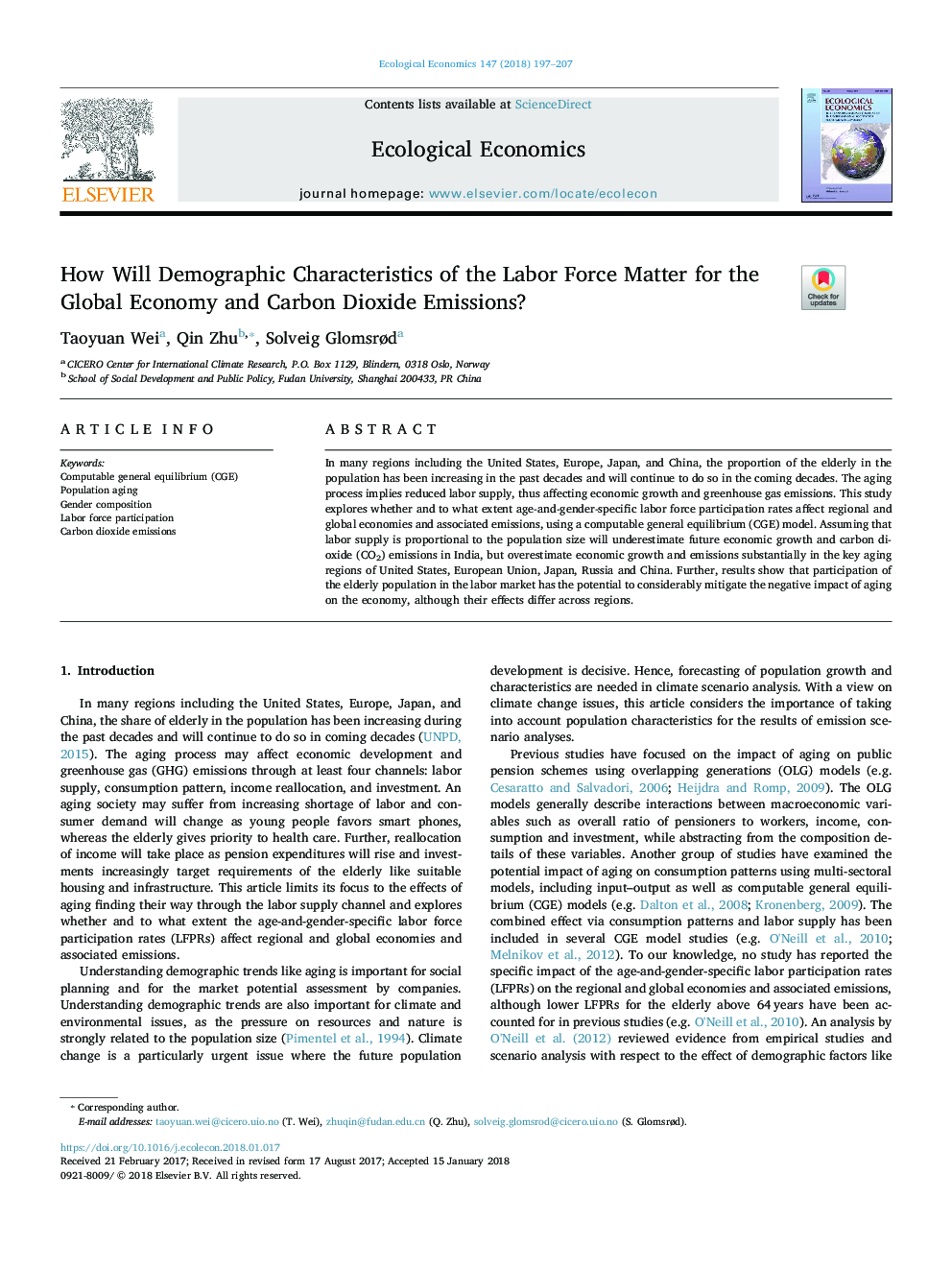| Article ID | Journal | Published Year | Pages | File Type |
|---|---|---|---|---|
| 7344352 | Ecological Economics | 2018 | 11 Pages |
Abstract
In many regions including the United States, Europe, Japan, and China, the proportion of the elderly in the population has been increasing in the past decades and will continue to do so in the coming decades. The aging process implies reduced labor supply, thus affecting economic growth and greenhouse gas emissions. This study explores whether and to what extent age-and-gender-specific labor force participation rates affect regional and global economies and associated emissions, using a computable general equilibrium (CGE) model. Assuming that labor supply is proportional to the population size will underestimate future economic growth and carbon dioxide (CO2) emissions in India, but overestimate economic growth and emissions substantially in the key aging regions of United States, European Union, Japan, Russia and China. Further, results show that participation of the elderly population in the labor market has the potential to considerably mitigate the negative impact of aging on the economy, although their effects differ across regions.
Keywords
Related Topics
Life Sciences
Agricultural and Biological Sciences
Ecology, Evolution, Behavior and Systematics
Authors
Taoyuan Wei, Qin Zhu, Solveig Glomsrød,
